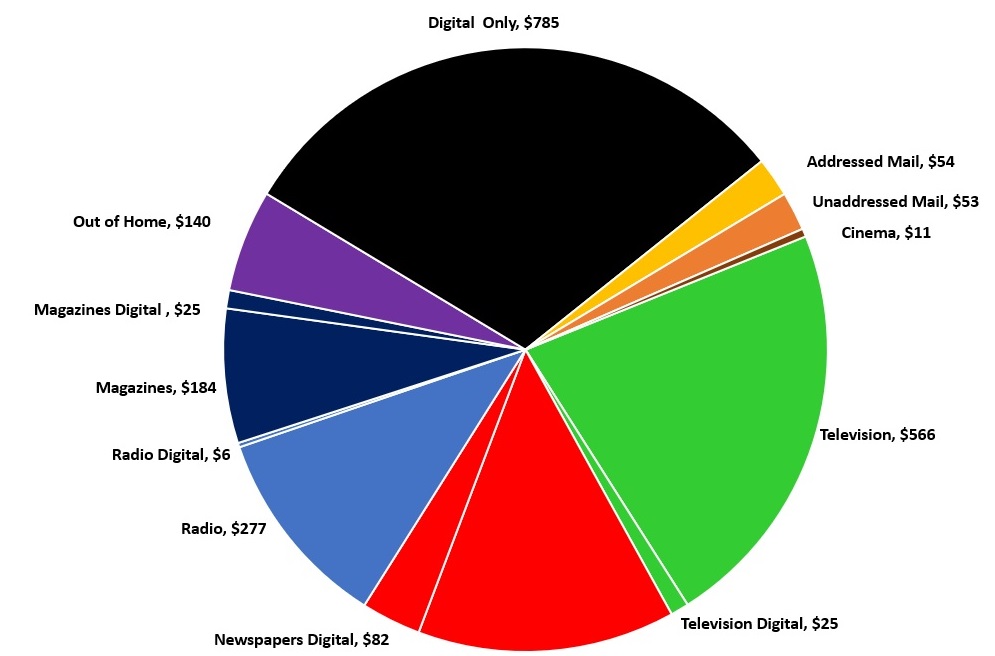Mediaweek’s John Drinnan rounds up the latest media news from the NZ market.
NZME’s radio win
The first GfK radio survey for 2018 shows NZME’s Newstalk ZB maintaining its position as the #1 station both nationally and in Auckland but it took a hit in the first survey. Overall, Newstalk ZB had a national share of 9.9%, down from 10.7% for the fourth quarter of 2017. In Auckland, Newstalk had an 11% share, compared to 12.7% for Q4 2017. Mai FM holds second place in Auckland. In breakfast, Mike Hosking on Newstalk had 13.2%, down from 14.2% in the fourth quarter of 2017. Hosking’s Auckland share was 15.3%, down from 16.3%.
Biggest radio cume audiences
MediaWorks radio recorded its biggest ever cume audience with a total of 2,417,600 listeners, an increase of 100,800 from December 2017. Total commercial radio listenership also grew to 3,390,200, an increase of approximately 67,400. MediaWorks reported its More FM is New Zealand’s most listened-to music station, increasing its cumulative listenership to 543,400 this survey period. Nationally, More FM’s breakfast attracted the most listeners of any music station, as well as being the nation’s outright favourite radio station in drive.
Leon Wratt, group content director, music, MediaWorks Radio, said in a statement: “We’re thrilled that MediaWorks remains New Zealand’s leading radio network and I’m particularly pleased with our results in major markets where we lead across the board. We’ve had significant increases in listeners in Auckland and Wellington as well as Christchurch where our 25-54 share is now 72.1%. It’s hard to pick out a star performer this survey among More FM, The Breeze, Mai FM and The Sound, but Magic was outstanding having recorded the highest share increase of all stations nationally, up 0.8 percentage points since last survey.”
NZ’s Jacindamania
The Kiwi media love affair for Prime Minister Jacinda Ardern has hit snags the past fortnight, with social media rallying behind her partner Clarke Gayford. The pair enjoyed glowing coverage from international media covering CHOGM but Gayford complained on Twitter when he arrived home to find a waspish opinion column in the NZ Herald, critical of him and his style. The writer and the Herald were roundly attacked by fans.
Defamation warning
That public backlash incidentally dovetailed into a surprising and unprecedented intervention by the NZ Police commissioner, Mike Bush, over long-running false rumours against Gayford. “While in general we [police] do not respond to enquiries which seek to confirm if individuals are under police investigation, on this occasion we can say that Mr Gayford is not and has not been the subject of any police inquiry, nor has he been charged in relation to any matter,” the commissioner said. A special counsel for Gayford – coincidentally a former high-profile journalist and media commentator – issued a statement to media warning against repeating the allegations that were “untrue and defamatory”.
New KPEX leader
KPEX New Zealand has appointed Simon Birkenhead (pictured above) as CEO. He replaces Richard Thompson who left to launch a new digital consultancy business. Birkenhead is from digital benchmarking business L2 in Europe, with experience in digital strategy, marketing and e-commerce. KPEX is a joint partnership between NZME, Stuff, MediaWorks and TVNZ, and provides real-time bidding access to the content publishers.
Media spend dip
The Advertising Standards Authority has released its 2017 report on New Zealand’s advertising. The report outlines where and how much advertising revenue is being generated. Advertising revenue across all main media was $2.561 billion for 2017, slightly down on 2016. Digital was up $2 million to $785 million – 31% of the total.
Outdoor increased from $118 million in 2016 to $140 million last year. As with the SMI 2017 agency spend figures released in February, both sectors showed growth.

Television generated $566 million and $25 million through its online properties.
Newspapers drew $353 million, with the digital aspect at $82 million. This was quite a big drop from $417 million total in 2016. However, digital was up from $61 million.
Support for women filmmakers
The New Zealand Film Commission announced a new investment fund to celebrate 125 years since New Zealand women won the right to vote. The fund is open to dramatic features in any genre and is offering an investment of $1.25 million each for up to two projects where the director and at least one other key creative is a woman. In 2019 there will be designated production funds to support Pasifika filmmakers, and then further funding allocated to other groups from a range of cultural and ethnic backgrounds, the LGBTQI community and people with disabilities.
Pacific media freedom
A prominent Tonga publisher and campaigner for media freedom Kalafi Moala says the media environment in Tonga is at a low ebb. He said the current government was trying to control channels of public information and responded to criticism or probing questions by ridiculing the media. Last week Tonga dropped two places to 51 in the Reporters Without Borders freedom rankings. Moala said, “The last three and a half years have been the worst that I have seen in Tonga.”
—
Top photo: new KPEX CEO Simon Birkenhead
